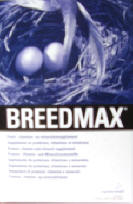Feeding
SOFTFOOD PREPERATION
You will see from the pictures below what this looks like once chopped
Firstly I wash out my soak seed that has been soaked for 24 hours in boiling water this soak seed only contains rape seed and hemp
I then put my Proprietary dried Egg food in a mixing bowl I prefer Quiko, I also use a high protein product to add to this called Breedmax.
with the egg food you can use a multi vitamin powder if you prefer,
Then I mix these to dry products together, then add the soak seed there is usually enough moisture in the soak seed to make the mix semi dry and no further liquid is added.
Then I add the Broccoli and Carrot mix to the egg food and mix it well, it is now ready for feeding.
Any not used can be placed into the fridge and used up later that day, when you have young birds in the nest you will need to give a second feed, I feed morning and again in the late afternoon.


Broccoli
Broccoli is a hardy vegetable of the cabbage family that is high in vitamins A and D. It develops best during cool seasons of the year. A member of the cabbage family and a close relative of cauliflower, broccoli packs more nutrients than any other vegetable. Broccoli contains large amounts of vitamin C and beta carotene which are important antioxidants. In the United States, broccoli has become the most favored cruciferous vegetable (cauliflower, Brussels Sprouts, and all forms of cabbage). Researchers have concluded that broccoli and other cruciferous vegetables should be included in the human diet several times a week. Consuming foods high in antioxidants can reduce the risk of some forms of cancer and heart disease. One half cup cooked broccoli contains the following nutrients as well as many other trace nutrients and phytochemicals.
Nutrition Facts (1/2 cup cooked fresh broccoli)
Calories 23
Dietary fiber 2.4 grams
Protein 2.3 grams
Carbohydrates 4.3 mg
Beta carotene
Vitamin C 49 mg
Folic Acid 53.3 nanograms
Calcium 89 mg
Iron 0.9 mg
Wash broccoli under cool running water. Never allow it to sit in water as it will lose water soluble nutrients Overcooked broccoli turns dark green and suffers nutrient loss, especially vitamin C.
Carrots
Carrots are eaten both raw and cooked and they can be stored for winter use. They are rich in carotene (the source of vitamin A) and high in fiber and sugar content. As the name implies, carrots are brimming with beta carotene. Beta carotene is a substance that is converted to Vitamin A in the human body. A 1/2 cup serving of cooked carrots contains four times the recommended daily intake of Vitamin A in the form of protective beta carotene. Beta carotene is also a powerful antioxidant effective in fighting against some forms of cancer, especially lung cancer. Current research suggests that it may also protect against stroke, and heart disease. Research also shows that the beta carotene in vegetables supplies this protection, not vitamin supplements. So eat your carrots.
Nutrition Facts (1/2 cup cooked)
Calories 35
Protein .86 grams
Carbohydrates 8.19 grams
Dietary Fiber 2 grams
Calcium 24.18 mg
Iron .47 mg
Phosphorus 23.4
Vitamin A 19,152 IU
Vitamin C 1.79
Carrots are one of those vegetables that loses very little nutritional value during cooking. In fact, some nutrients in slightly cooked carrots are more available to the body than raw carrots. Cooking actually breaks down the tough cellular wall of carrots making some nutrients more useable to the body.
